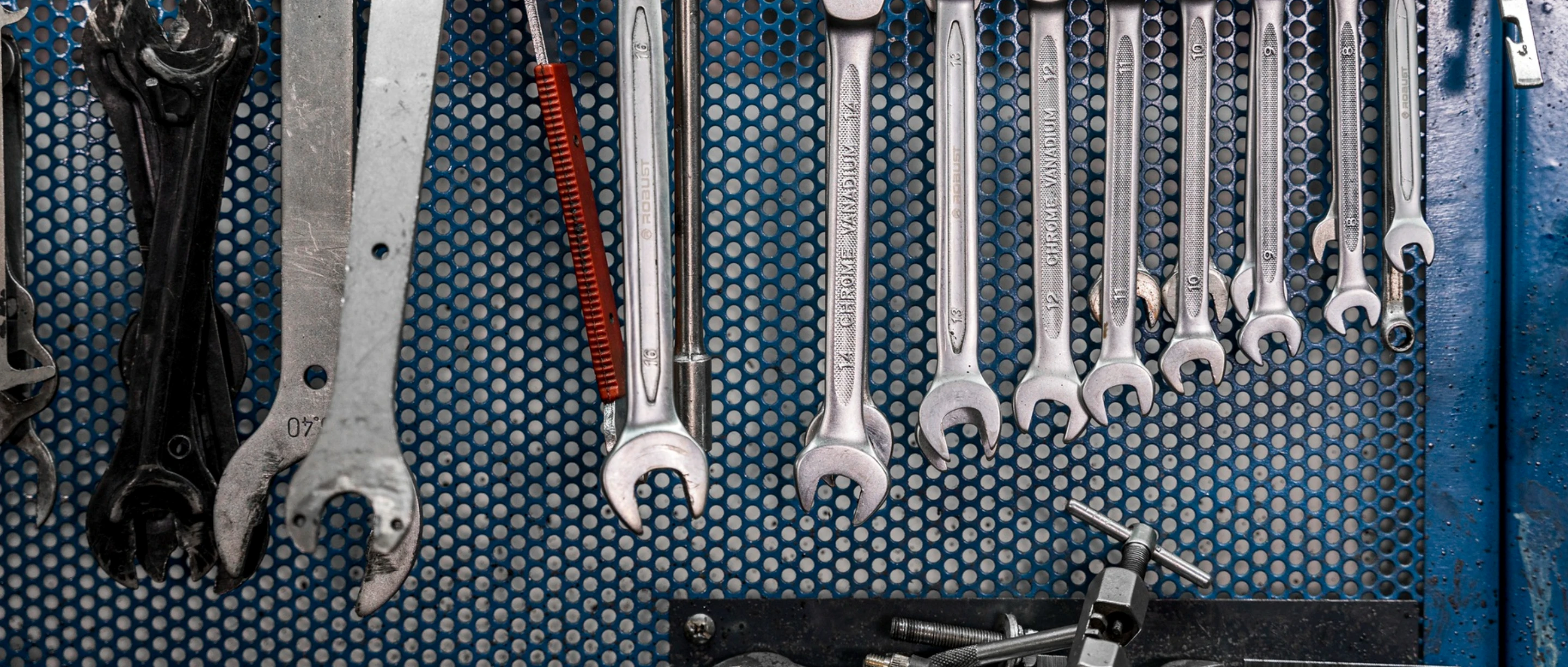Archive for July 2025Straight Ahead (Wheel Alignment)Posted July 27, 2025 3:57 AMIf every road was straight and smooth, we wouldn't have to worry much about wheel alignment. But they're not, so we do. Hitting potholes or driving on rough pavement can knock your vehicle out of alignment and you'll notice it in one of several ways. Your steering wheel may not be centered when you're driving straight ahead, or your vehicle may pull to one side. You may find your tires wearing on one side or they may squeal. All are signs that could point to you needing an alignment. Your wheels should be perpendicular to the road and parallel with each other. If not, your tires will wear out faster and your vehicle won't go straight on a level straightaway. In alignment, there are several factors that must be checked. One is camber. Your wheels should be straight up and down if you look at them from the front. If not, you'll wear your tires unevenly on one side. Another factor is caster, the angle of the steering pivot. Most vehicles have what's called positive caster, when the top of the steering pivot leans toward the rear. Proper caster balances steering effort, stability on the highway and cornering. You may have heard the term "toe" in reference to your wheels. If you looked at your front wheels from straight above, for example, imagine your wheels were your feet. If you were to turn your toes in toward each other, that would be toeing in. The toe of your vehicle should be set to manufacturer's specifications so your vehicle handles well and doesn't prematurely wear out tires. It's a good idea to have your alignment checked periodically since it can get knocked out by one hard knock or a lot of little knocks. It's not just about tire wear, it's about ride comfort and safe handling. You may say a vehicle aligned just feels divine.
A Hot Mess (AC System-Compresser)Posted July 20, 2025 4:15 AMAir conditioning used to be a real luxury in a vehicle, but now it's standard in most. Your vehicle's air conditioning system is built to last a pretty long time, but like anything mechanical, sometimes it fails. It helps to know a little about how the A/C works. There's a compressor that pressurizes the refrigerant (you probably recognize the term Freon). That makes it hotter, so it then goes through a condenser that cools it off. Then another component takes out impurities and humidity before the Freon goes to a device that makes it lose pressure before it goes to the evaporator. That's where it gets colder and takes the humidity out of the air. Then your vehicle's ventilation system blows air over the evaporator, cooling the cabin air that gives you such relief on a hot day. Of all these parts, one that does a lot of work is the compressor. It has to compress that refrigerant and circulate it through the system. It turns on and off several times when it's working. The good news is that if it's going to fail, it sometimes lets you know. One of the signs that your air conditioning compressor is going bad is a noise under the hood when the engine is on, sometimes a squealing or grinding sound. It usually is pretty noticeable. Compressors have a bearing that can seize up after time, causing the belt that drives it to squeal when it's trying to turn something that won't turn. It will sometimes cause that belt to break. Your service advisor can tell you if your compressor is repairable or must be replaced. In the case of a broken belt (often a serpentine belt that drives several components) the belt will have to be replaced as well. The compressor also has a clutch that turns the compressor on and off so it doesn't have to run all the time. Sometimes that clutch can fail, too, and your service advisor will often recommend you replace the compressor and the clutch at the same time. Our technicians can help make sure your air conditioning system keeps its cool, and you along with it. Car Doc On The Island A Bright Spark (Ignition Coil Replacement)Posted July 13, 2025 4:24 AMEver wonder how your vehicle’s engine is able to take the 12-volts from its battery and ramp that up to as high as the tens of thousands of volts it takes to fire its spark plugs? The secret is something called an ignition coil. Most newer vehicles have an ignition coil at each cylinder, but older ones have a coil that serves all of the spark plugs. There are telltale signs that you have an ignition coil problem. As you might expect, one symptom is it’s hard to start your engine or it won’t start at all. If your engine is misfiring or not running smoothly or you see the Check Engine light come on, those all could point to an ignition coil failure. Several things can contribute to ignition coil trouble in addition to normal wear and tear. Moisture and dirt may have gotten inside the coil, plus the heat and vibration of your engine over time can contribute to them going bad. Bad spark plugs or plug wires can also be a cause. While ignition coils can last 100,000 miles/160,000 km, depending on how you drive and in what conditions. If you start noticing some of the signs and symptoms just described, it’s a good idea to schedule a visit to see us so a technician can diagnose what’s wrong. Driving too long with an engine misfiring can damage your catalytic converter, and that can be expensive to replace. A technician will thoroughly check your ignition system and determine where the failure is. If it’s only one coil that’s bad, it may be the only thing that will need replacing. If your vehicle has a distributor, it may also need to be replaced. Properly-working ignition coils will help your vehicle operate at its best and help prevent future engine damage. Car Doc On The Island Feeling Powerless (Why Is My Battery Light On?)Posted July 6, 2025 3:52 AMWhen one of your vehicle’s warning lights comes on, the first thing that comes to mind is, “Oh, no, what’s wrong now?” When it’s the battery light, it means there’s something wrong with your vehicle’s battery or charging system. And because both are important for your vehicle to work properly, it’s a good idea to get it checked out. Here are some things that may cause a battery light to illuminate. It could be that your battery has failed. It could be on its last legs or completely dead. When it isn’t showing it has the voltage it should, your vehicle lets you know. If it’s not the battery itself, it could be the system that charges it. The alternator is part of that system and could have a problem. It could be putting out no power, too little power, or too much. The alternator may not be working because the belt that drives it (using the engine’s mechanical power) could be broken or slipping. Or the alternator pulley may be broken. The alternator needs to have a solid connection to the battery, and sometimes the posts that connect to the battery cables get so corroded, they can’t conduct enough electricity. Or it could be that a battery cable isn’t conducting power properly. Because the alternator supplies power to other parts of your vehicle, if it gets overloaded, it will also cause your battery light to come on. Other possibilities are an electrical short in the charging system or a failed voltage regulator. Your vehicle may be hard to start or it may not start at all if you have any of these problems. It’s important to bring it in to us so we can diagnose and repair the problem before you wind up stranded… and feeling really powerless. Car Doc On The Island | ||
SearchArchiveApril 2016 (16)May 2016 (5) June 2016 (4) July 2016 (4) August 2016 (5) September 2016 (4) October 2016 (5) November 2016 (4) December 2016 (4) January 2017 (5) February 2017 (4) March 2017 (4) April 2017 (5) May 2017 (4) June 2017 (4) July 2017 (5) August 2017 (4) September 2017 (3) October 2017 (5) November 2017 (4) December 2017 (3) January 2018 (5) February 2018 (4) March 2018 (4) April 2018 (5) May 2018 (4) June 2018 (4) July 2018 (5) August 2018 (4) September 2018 (5) October 2018 (4) November 2018 (4) December 2018 (5) January 2019 (5) February 2019 (4) March 2019 (5) April 2019 (4) May 2019 (4) June 2019 (5) July 2019 (4) August 2019 (4) September 2019 (5) October 2019 (4) November 2019 (4) December 2019 (5) January 2020 (5) February 2020 (4) March 2020 (5) April 2020 (4) May 2020 (5) June 2020 (4) July 2020 (4) August 2020 (5) September 2020 (4) October 2020 (4) November 2020 (5) December 2020 (4) January 2021 (6) February 2021 (4) March 2021 (4) April 2021 (4) May 2021 (5) June 2021 (4) July 2021 (4) August 2021 (5) September 2021 (4) October 2021 (5) November 2021 (4) December 2021 (4) January 2022 (6) February 2022 (4) March 2022 (4) April 2022 (4) May 2022 (5) June 2022 (4) July 2022 (5) August 2022 (4) September 2022 (4) October 2022 (5) November 2022 (4) December 2022 (4) January 2023 (5) February 2023 (4) March 2023 (4) April 2023 (5) May 2023 (4) June 2023 (4) July 2023 (5) August 2023 (4) September 2023 (4) October 2023 (5) November 2023 (4) December 2023 (5) January 2024 (5) February 2024 (4) March 2024 (5) April 2024 (4) May 2024 (4) June 2024 (5) July 2024 (4) August 2024 (4) September 2024 (5) October 2024 (4) November 2024 (4) December 2024 (5) January 2025 (4) February 2025 (4) March 2025 (5) April 2025 (4) May 2025 (4) June 2025 (5) July 2025 (4) August 2025 (5) September 2025 (4) October 2025 (4) November 2025 (4) | CategoriesKeys to a long lasting vehicle (2)Timing Belt (3)Fuel Economy (9)Brakes (13)Fluids (7)Maintenance (8)Tires and Wheels (3)Air Conditioning (9)Safety (1)Exhaust (7)Service Standards (3)Steering (10)What Customers Should Know (74)Alignment (6)Dashboard (1)Fuel System (5)Cooling System (5)Alternator (6)Battery (10)Auto Safety (5)Windshield Wipers (2)Battery Replacement (1)Service Intervals (2)Wheel Bearings (1)Customer Detective Work (1)Shocks & Struts (2)Tire Rotation and Balancing (3)Winter Tires (1)Tires (8)Suspension (2)Inspection (4)TPMS (2)Drive Train (4)Automotive News (2)Safe Driving (1)Fuel Saving Tip: Slow Down (1)Winter Prep (1)Check Engine Light (2)Oil Change (5)Brake Service (4)Differential Service (1)Serpentine Belt (1)Spark Plugs (1)Older Vehicles (1)Headlamps (3)Transmission (4)Transfer Case Service (1)PCV Valve (1)Engine Air Filter (2)Cabin Air Filter (2)Fuel Pump (1)Trip Inspection (2)Shocks and Struts (1) | |

AUTONET TV

Testimonials

I called about issues for my car and they gave me excellent information for my situation that will help me greatly. Thank you for your honesty and help!~ Nicole Dillon, 11/20/2025

After sitting all summer our car’s battery was dead. One call was all I needed to do and Desriee made all the arrangements for AAA towing, new battery under warranty replaced, overnight check to confirm all was well and cost was reasonable. Both she and Stacey kept me updated and reviewed all that was done. Excellent service for both the customer and the car!~ Barbara Boonstra, 11/20/2025










